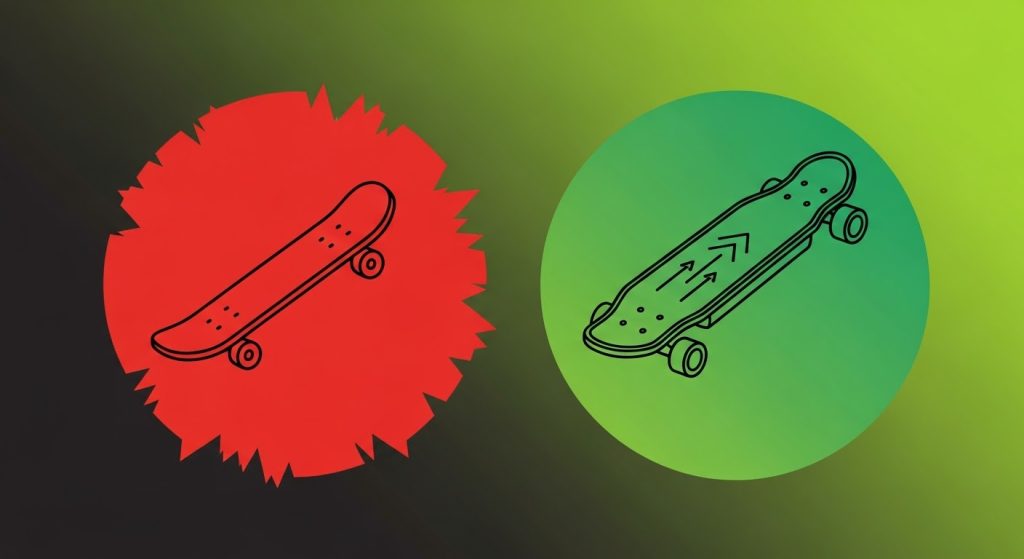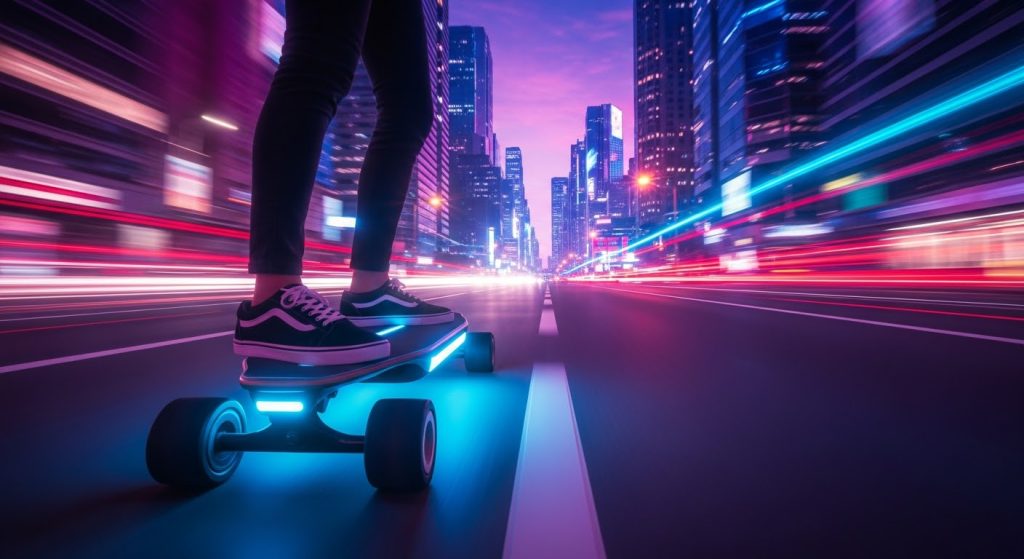Electric skateboards have rolled from niche curiosity to mainstream obsession, popping up in cities, college campuses, and even off-road trails around the world. But if you’re new to the scene, one question always comes first: Are electric skateboards actually easy to ride?
The simple answer: Yes… but with a few important “ifs.”
The longer answer? Let’s unpack it properly.
Whether you’re eyeing an electric skateboard for daily commuting, weekend adventures, or just the thrill of moving faster than your legs can walk, knowing what to expect before stepping on the board makes a huge difference. This guide breaks down how easy (or challenging) electric skateboarding really is, what factors influence the riding experience, and how beginners can get comfortable quickly and safely.
Why Electric Skateboards Feel Easier Than People Expect
If you’ve ever tried riding a traditional skateboard, you already know the drill: pushing, balancing, carving, stopping with your foot, constantly adjusting your weight, it’s a whole workout.
Electric skateboards change the game.
Instead of kicking to accelerate, you rely on a wireless remote. Instead of losing speed on slopes, the motor keeps you moving. Instead of wrestling with momentum, you control it with buttons or triggers.
Here’s why many beginners find e-skating easier than regular skating:
Related: Traditional to Electric Skateboarding: Evolution of Riding Culture
1. Smooth, Controlled Acceleration
Electric skateboards use electronic speed controllers (ESCs) to regulate power. This means there’s no jerky movement or sudden lurching forward; you roll into motion gradually. Beginners love this because it reduces anxiety and gives time to build confidence.
2. Automatic Braking
With traditional skateboards, stopping requires foot braking or power sliding, both tough moves if you’re new. E-skateboards offer electronic braking that activates through the remote. You simply ease off the throttle and gently brake down. It’s intuitive, safe, and incredibly beginner-friendly.
3. Stability From Modern Deck Designs
Most electric skateboards aren’t tiny popsicle decks; they’re longer, wider, and heavier. That extra mass creates stability, especially at lower speeds. Many decks also feature concave shapes or drop-down designs that cradle your feet and keep you balanced naturally.
4. No Need for Physical Strength
Since the motor handles acceleration, climbing hills, and maintaining speed, your body only has to focus on balance and steering. This is why e-skateboards appeal to people of all ages, not just athletic riders.
The Learning Curve: What New Riders Need to Know
Okay, so they’re easier than expected, but it doesn’t mean you can just hop on and fly down the street at 30 km/h. There is a learning curve. Here’s the real talk:
1. Balancing Still Matters
You don’t escape physics. You’re still standing on a moving board, and your center of gravity will determine your stability. Most beginners can stand balanced within 5–10 minutes, but mastering smooth body control takes a little practice.
2. Steering With Weight Shift
You steer by leaning, not turning the wheels with your hands. Beginners sometimes over-lean or freeze up. With time, smoother carving becomes second nature, but the first few rides require patience and small, deliberate movements.
3. Remote Coordination
Throttle, brake, mode switching, your dominant hand controls everything. At first, riders tend to:
-
accelerate too quickly,
-
brake too harshly,
-
forget to return the throttle to neutral
A few short rides usually fix this. It’s like learning any new controller, awkward at first, automatic later.
4. Terrain Makes a Big Difference
Flat, smooth pavement? Super easy.
Cracked sidewalks, gravel, grass, or steep hills? That’s when things get spicy.
Beginners should always start with:
-
empty roads
-
parking lots
-
clean bike paths
This keeps the learning phase stress-free.
What Makes Some Electric Skateboards Easier to Ride Than Others

Not all boards are built equally. Some are perfect for beginners, while others are designed for skilled riders craving speed, torque, and off-road intensity. If you’re wondering why your friend’s board feels easier than the one you’re considering, here’s why:
1. Bigger Wheels = More Forgiving
Large wheels roll over cracks, stones, and small bumps smoothly. Smaller wheels feel nimble but unstable at low speeds. For beginners, larger always means easier.
2. Flexible Decks Absorb Shocks
A deck with a bit of flex feels comfortable, stable, and predictable. Very stiff boards transmit every vibration to your feet, which can be intimidating until you get used to it.
3. Beginner Riding Modes Help a Lot
Most e-skateboards offer multiple speed modes. These beginner modes:
-
cap the top speed
-
slow down acceleration
-
soften the braking curve
This allows new riders to learn gradually without fear of sudden power.
4. Weight Plays a Role
Heavier boards (like all-terrain models) feel planted and stable but can be awkward when carrying. Lighter boards are easier to transport but can feel twitchier while riding.
5. The ESC Quality Matters
Cheap ESCs can be jerky, unpredictable, or laggy. A good ESC delivers smooth power and braking, making the whole ride feel more natural and easier to learn.
How Long Does It Take to Learn? (An Honest Timeline)
If you’re consistent, you’ll be surprised how fast you progress:
First 10 minutes
-
You learn to stand balanced
-
You understand how the remote works
-
You get comfortable moving slowly
Day 1
-
You ride confidently at low speeds
-
You can accelerate and brake without panic
-
You handle small turns
End of Week 1
-
You start carving
-
You can ride safely in lightly busy areas
-
You avoid obstacles smoothly
After 1 month
-
You feel almost effortless on straight paths
-
You ride moderate hills with confidence
-
You start exploring higher modes and longer routes
Most beginners become steady, safe riders within just a few days.
Are Electric Skateboards Easy to Ride for Everyone?

Pretty much, but with a few exceptions. They’re especially beginner-friendly for:
-
commuters
-
teens
-
adults with no prior skateboarding background
-
cyclists transitioning to personal electric vehicles
-
Anyone who wants a fun, low-effort ride
However, they might feel challenging if you:
-
have never balanced on a board before
-
have poor coordination
-
I’m nervous about speed or movement
-
Ride on rough terrain during your first sessions
The learning curve is real, but it’s absolutely manageable.
How to Make Learning Even Easier: Top Tips for Beginners
If you want to accelerate your comfort level, follow these tried-and-tested steps:
1. Start in the slowest mode
Even if you feel brave. Trust me, your future self will thank you.
2. Keep your knees bent
This lowers your center of gravity, boosting stability.
3. Hold the remote loosely
A tight grip leads to over-throttling.
4. Look ahead, not at your feet
Your body naturally follows your gaze.
5. Practice braking more than accelerating
Stopping safely is half the skillset.
6. Wear safety gear (seriously)
Helmet, wrist guards, and knee pads make early rides much less stressful.
7. Ride on smooth ground first
You want to build confidence without surprises.
Final Words
Yes, electric skateboards are surprisingly easy for beginners, much easier than traditional skateboarding and far more intuitive than many people expect.
They offer:
-
smooth acceleration
-
simple braking
-
stable deck designs
-
beginner-friendly speed modes
-
a learning curve that’s quick and confidence-boosting
As long as you start slow, practice in safe areas, and choose the right board, you’ll be riding comfortably in no time. Whether for commuting, fun, or adventure, electric skateboarding is one of the easiest and most rewarding personal electric vehicles to learn in 2026.
If you want, I can also write:





